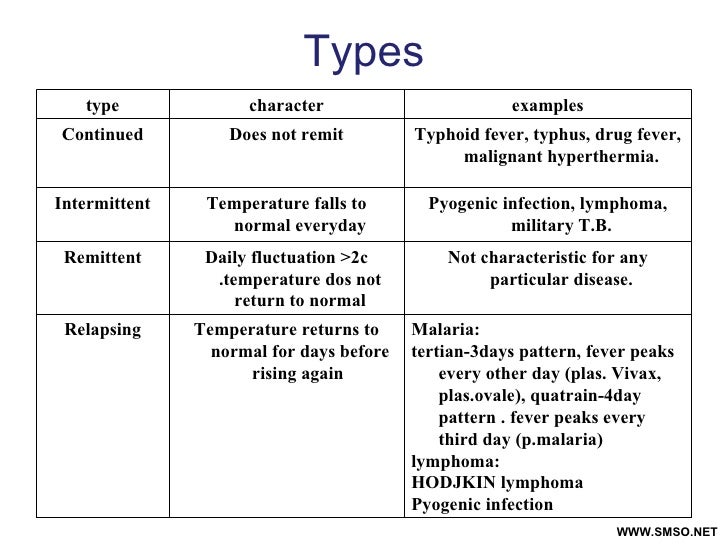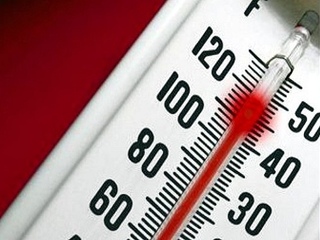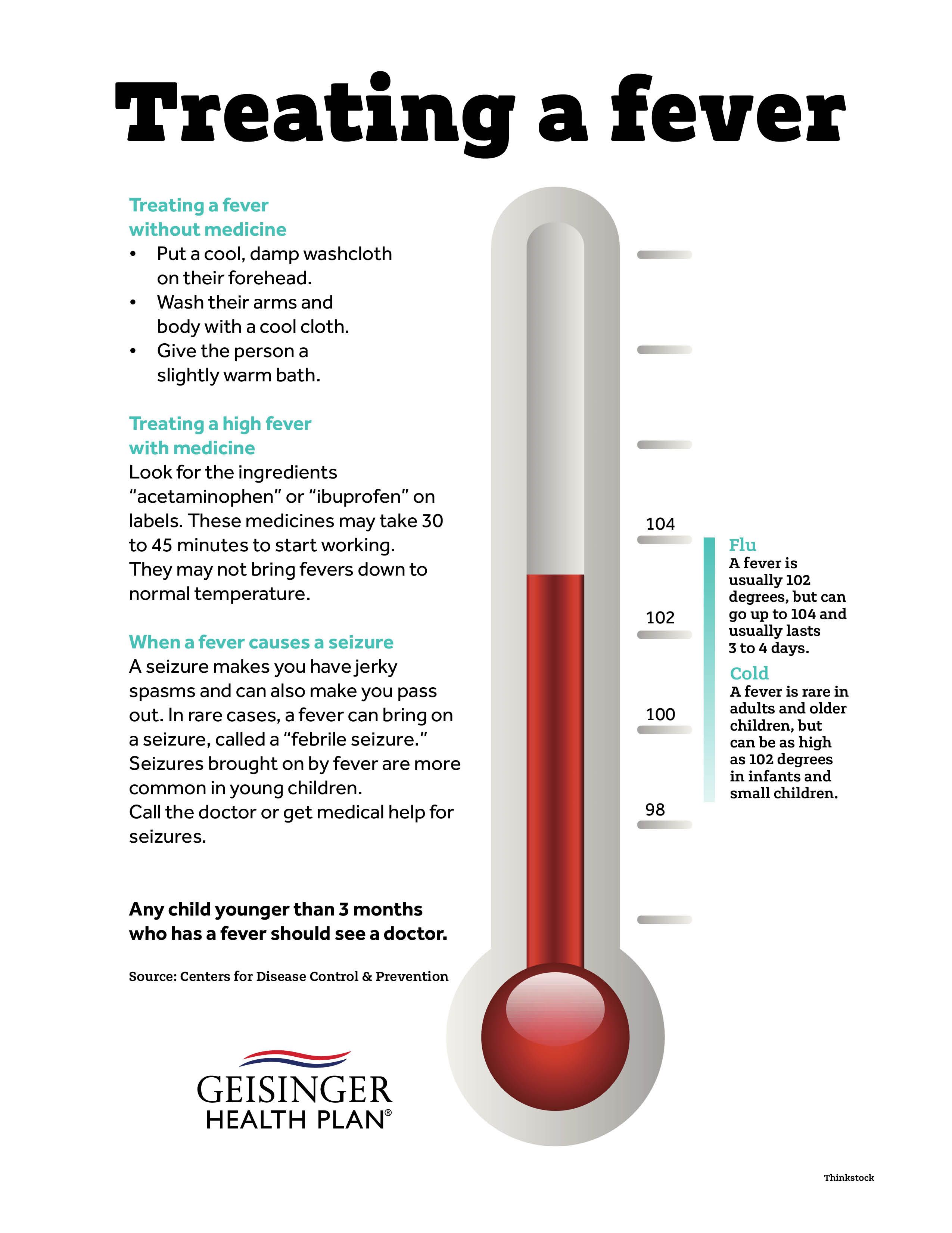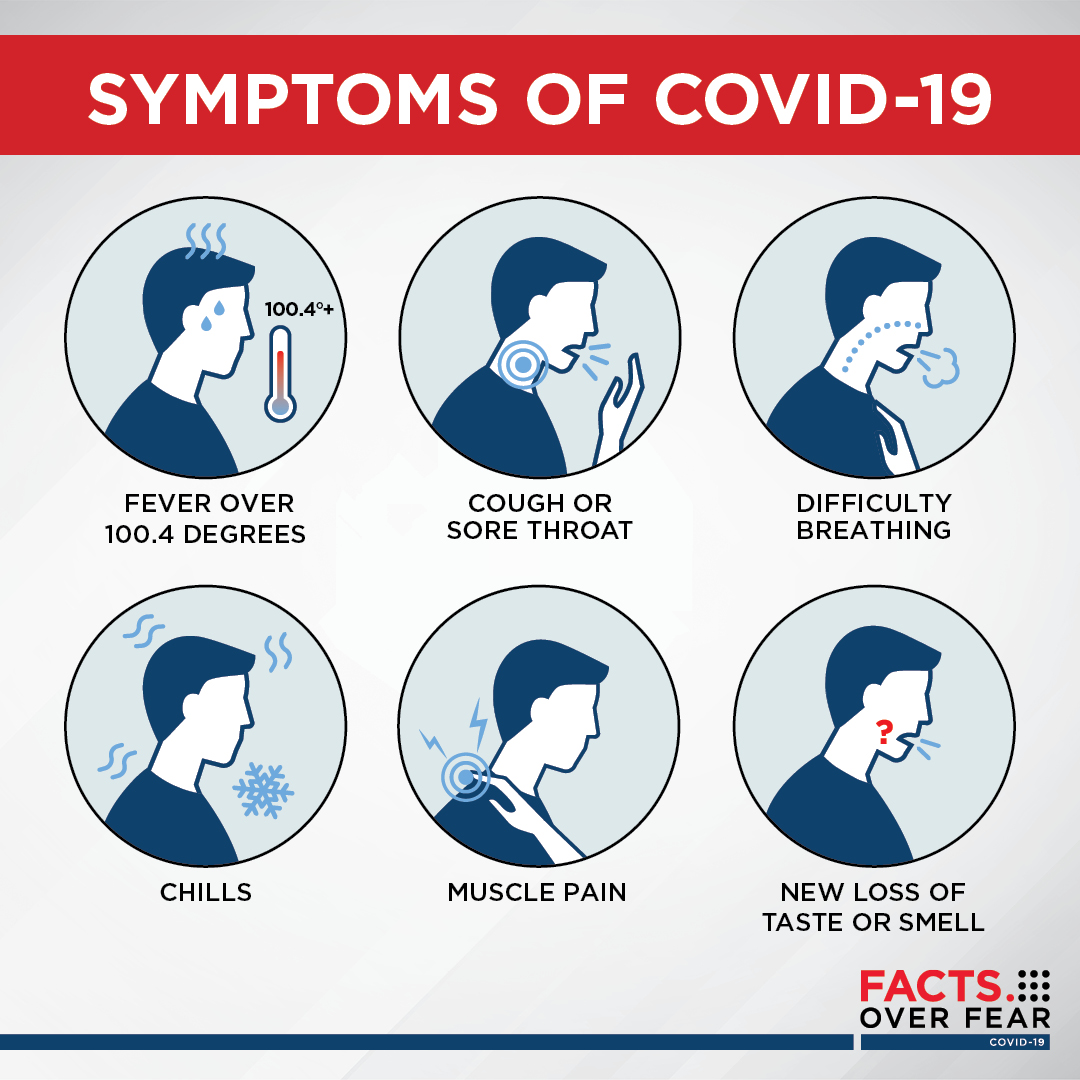107 Degrees Fever: Causes, Symptoms, and Treatment of High & Low Grade Fever
What is a 107 degrees fever? How to reduce a high fever? Explore the causes, symptoms, and treatment of hyperpyrexia or high-grade fever.
Understanding Fever Temperatures
Normal body temperature typically ranges around 98.6°F (37°C). However, slight fluctuations can occur throughout the day, with the lowest temperature in the early morning and the highest in the late afternoon. A fever is generally defined as a body temperature of 100.4°F (38°C) or higher. When the body temperature exceeds 106°F (41.1°C) due to a fever, it is considered hyperpyrexia, which is a medical emergency.
Symptoms of Hyperpyrexia
In addition to a fever of 106°F (41.1°C) or higher, symptoms of hyperpyrexia can include increased or irregular heart rate, muscle spasms, rapid breathing, seizures, confusion or changes in mental state, loss of consciousness, and coma. These severe symptoms require immediate medical attention, as untreated hyperpyrexia can lead to organ damage and death.

Causes of Hyperpyrexia
Hyperpyrexia can be caused by a variety of severe infections, including bacterial, viral, and parasitic infections. Some examples include pneumococcal, staphylococcal, and influenza infections, as well as malaria. Sepsis, a life-threatening complication from an infection, can also lead to hyperpyrexia. In rare cases, exposure to certain anesthetic drugs or other medications can cause hyperthermia, leading to hyperpyrexia.
Diagnosing the Cause of Hyperpyrexia
To diagnose the underlying cause of hyperpyrexia, your doctor will take a sample, such as a blood, urine, stool, or sputum sample, to test for the presence of microorganisms. They may also perform a physical exam and review your medical history, particularly any exposure to specific drugs that could be causing the condition.
Treating Hyperpyrexia
Treating hyperpyrexia involves addressing the underlying cause, which may include administering antibiotics for bacterial infections or antiviral medications for viral infections. Additionally, cooling measures, such as applying cool compresses or immersing the person in cool water, may be used to lower the body temperature. Medication may also be provided to reduce fever and manage other symptoms.

Preventing Hyperpyrexia
To help prevent hyperpyrexia, it is important to seek prompt medical attention for any fever, especially in young infants under 3 months old. Practicing good hygiene, such as handwashing, can also help reduce the risk of contracting infectious diseases that can lead to hyperpyrexia.
Key Takeaways
- Hyperpyrexia is a medical emergency defined as a body temperature exceeding 106°F (41.1°C) due to a fever.
- Symptoms of hyperpyrexia include increased heart rate, muscle spasms, rapid breathing, seizures, confusion, and coma.
- Hyperpyrexia can be caused by severe bacterial, viral, or parasitic infections, as well as certain medications or heat stroke.
- Diagnosing the underlying cause involves testing for the presence of microorganisms and reviewing the patient’s medical history.
- Treatment focuses on addressing the root cause and lowering the body temperature through cooling measures and medication.
- Seeking prompt medical attention for any fever, especially in young infants, can help prevent the development of hyperpyrexia.
Why is it important to seek medical attention for a fever in young infants under 3 months old?

Infants under 3 months old are at a higher risk of developing serious bacterial infections that can lead to hyperpyrexia. Even a relatively low fever of 100.4°F (38°C) or higher in this age group can be a sign of a potentially life-threatening condition, so it is crucial to seek prompt medical care to ensure the infant receives the appropriate treatment and monitoring.
What are some of the severe infections that can cause hyperpyrexia?
Hyperpyrexia can be caused by a variety of severe bacterial, viral, and parasitic infections, including:
– Bacterial infections: Streptococcus pneumoniae, Staphylococcus aureus, Haemophilus influenzae
– Viral infections: Enterovirus, influenza A
– Parasitic infection: Malaria
How can heat stroke lead to hyperpyrexia?
Heat stroke occurs when the body overheats to dangerous levels, typically due to overexertion in a hot environment. This can cause the body temperature to rise dramatically, leading to hyperpyrexia. People who have difficulty regulating their body temperature, such as older adults, young children, or those with chronic illnesses, are at a higher risk of developing heat stroke and the resulting hyperpyrexia.

What is the role of the thyroid in hyperpyrexia?
Thyroid storm, a rare condition caused by the overproduction of thyroid hormones, can also lead to hyperpyrexia. In this case, the excessive thyroid hormones disrupt the body’s ability to regulate temperature, resulting in a dangerously high fever. Early identification and treatment of thyroid storm are crucial to address the underlying thyroid dysfunction and manage the hyperpyrexia.
How can certain medications contribute to hyperpyrexia?
In addition to infections and heat-related factors, the use of certain prescription and recreational drugs can also lead to conditions that result in hyperpyrexia. Examples include:
– Anesthetic drugs that can cause malignant hyperthermia
– Serotonergic drugs like SSRIs that can cause serotonin syndrome
– Antipsychotic drugs that can lead to neuroleptic malignant syndrome
– Recreational drugs like MDMA (ecstasy)
What is the importance of prompt medical attention for hyperpyrexia?
Hyperpyrexia is a medical emergency that requires immediate treatment. If left untreated, the extremely high body temperature can lead to organ damage and even death. Seeking prompt medical care is crucial to lower the body temperature, address the underlying cause, and prevent the potentially life-threatening complications of hyperpyrexia.

Definition, Symptoms, Causes, and Treatment
What is hyperpyrexia?
Normal body temperature is typically 98.6°F (37°C). However, slight fluctuations can occur throughout the day. For example, your body temperature is lowest in the early hours of the morning and highest in the late afternoon.
You’re considered to have a fever when your body temperature rises a few degrees above normal. This is typically defined as 100.4°F (38°C) or higher.
In some cases, your body temperature can rise greatly above its normal temperature due to things other than fever. This is referred to as hyperthermia.
When your body temperature exceeds 106°F (41.1°C) due to a fever, you’re considered to have hyperpyrexia.
Call your doctor if you or your child has a temperature of 103 degrees or higher. You should always seek emergency medical care for a fever if you’re experiencing the following symptoms:
- temperature of 100.4°F (38°C) or higher in children under three months of age
- irregular breathing
- confusion or sleepiness
- seizures or convulsions
- severe headache
- skin rash
- persistent vomiting
- severe diarrhea
- abdominal pain
- stiff neck
- pain while urinating
In addition to a fever of 106°F (41. 1°C) or higher, symptoms of hyperpyrexia can include:
1°C) or higher, symptoms of hyperpyrexia can include:
- increased or irregular heart rate
- muscle spasms
- rapid breathing
- seizures
- confusion or changes in mental state
- loss of consciousness
- coma
Hyperpyrexia is considered to be a medical emergency. If left untreated, organ damage and death can occur. Always seek immediate medical attention.
Infection
Various severe bacterial, viral, and parasitic infections can lead to hyperpyrexia.
Infections that can cause hyperpyrexia include but are not limited to:
- S. pneumoniae, S. aureus, and H. influenzae bacterial infections
- enterovirus and influenza A viral infections
- malaria infection
Sepsis can also cause hyperpyrexia. Sepsis is a life-threatening complication from an infection. In sepsis, your body releases a variety of compounds into your bloodstream to help fight infection. This can sometimes produce a severe inflammatory response that can lead to organ damage and failure.
In order to diagnose an infectious cause of hyperpyrexia, your doctor will take a sample to test for the presence of microorganisms. Depending on the nature of the suspected infection, this sample could be a blood sample, urine sample, stool sample, or sputum sample. Your doctor can then identify the infectious agent using various culture or molecular methods.
Anesthesia
In rare circumstances, exposure to some anesthetic drugs can cause extremely high body temperature. This is referred to as malignant hyperthermia (sometimes called malignant hyperpyrexia).
Being prone to malignant hyperthermia is hereditary, which means that it can be passed from parent to child.
Malignant hyperthermia can be diagnosed by testing a sample of muscle tissue. If you have a relative who has malignant hyperpyrexia, you should consider being tested for the condition.
Other drugs
In addition to anesthesia drugs, use of certain prescription drugs can lead to conditions in which hyperpyrexia is a symptom.
An example of one such condition is serotonin syndrome. This potentially life-threatening condition can be caused by serotonergic drugs, such as selective serotonin reuptake inhibitors (SSRIs).
Another example is neuroleptic malignant syndrome, which can be caused by a reaction to antipsychotic drugs.
Additionally, some recreational drugs, such as MDMA (ecstasy), can cause hyperpyrexia.
Symptoms for these conditions typically develop shortly after exposure to the drug.
Your doctor will perform a physical exam and review your history of exposure to specific drugs to diagnose drug-related hyperpyrexia.
Heat stroke
Heat stroke is when your body overheats to dangerous levels. This can be caused by overexerting yourself in a hot environment. Additionally, people who have difficulty regulating their body temperature may develop heat stroke. This can include older adults, very young children, or individuals with chronic illnesses.
Your doctor will perform a physical examination to diagnose heat stroke. Since heat stroke and dehydration can stress the kidneys, they may also test your kidney function.
Since heat stroke and dehydration can stress the kidneys, they may also test your kidney function.
Thyroid storm
Thyroid storm is a rare condition that can occur when thyroid hormones are overproduced.
Early identification and treatment of thyroid storm are essential. Your doctor will use your medical history, symptoms, and lab tests to confirm thyroid storm.
In newborns
Hyperpyrexia is rare in infants. However, an infant with hyperpyrexia may be at risk for a serious bacterial infection.
Several studieshaveindicated an association with high fever and risk of serious bacterial infection in very young infants.
If your child is under 3 months old and has a fever of 100.4°F or higher, it’s very important that they receive prompt medical attention.
Treatment for hyperpyrexia involves addressing both the increase in body temperature and the condition that’s causing it.
Sponging or bathing in cool water can help lower your body temperature. Ice packs, blowing cool air, or spraying with cool water may also help. Additionally, any tight or extra clothing should be removed. When you have a fever, these measures may not work to bring down the temperature to normal, or even more than a degree or two.
Ice packs, blowing cool air, or spraying with cool water may also help. Additionally, any tight or extra clothing should be removed. When you have a fever, these measures may not work to bring down the temperature to normal, or even more than a degree or two.
You may also be given intravenous (IV) fluids as a supportive treatment and to help with dehydration.
If the hyperpyrexia is due to an infection, your doctor will identify the cause. They’ll then administer the proper drug therapy to treat it.
If you have malignant hyperthermia, your doctor or anesthesiologist will stop all anesthetic drugs and give you a drug called dantrolene. Going forward, you should always inform your doctor or anesthesiologist of your condition.
Drug-related hyperpyrexia is treated by discontinuing use of the drug, receiving supportive care, and managing symptoms such as rapid heart rate and increased blood pressure.
Conditions such as thyroid storm can be treated with antithyroid drugs.
Hyperpyrexia, or fever of 106°F or higher, is a medical emergency. If the fever is not lowered, organ damage and death can result.
In fact, if you’re experiencing a fever of 103°F or higher with other significant symptoms, it’s important that you seek immediate medical care.
Your doctor will work quickly to diagnose what’s causing your high fever. They’ll work to safely lower the fever before serious complications occur.
Definition, Symptoms, Causes, and Treatment
What is hyperpyrexia?
Normal body temperature is typically 98.6°F (37°C). However, slight fluctuations can occur throughout the day. For example, your body temperature is lowest in the early hours of the morning and highest in the late afternoon.
You’re considered to have a fever when your body temperature rises a few degrees above normal. This is typically defined as 100.4°F (38°C) or higher.
In some cases, your body temperature can rise greatly above its normal temperature due to things other than fever. This is referred to as hyperthermia.
This is referred to as hyperthermia.
When your body temperature exceeds 106°F (41.1°C) due to a fever, you’re considered to have hyperpyrexia.
Call your doctor if you or your child has a temperature of 103 degrees or higher. You should always seek emergency medical care for a fever if you’re experiencing the following symptoms:
- temperature of 100.4°F (38°C) or higher in children under three months of age
- irregular breathing
- confusion or sleepiness
- seizures or convulsions
- severe headache
- skin rash
- persistent vomiting
- severe diarrhea
- abdominal pain
- stiff neck
- pain while urinating
In addition to a fever of 106°F (41.1°C) or higher, symptoms of hyperpyrexia can include:
- increased or irregular heart rate
- muscle spasms
- rapid breathing
- seizures
- confusion or changes in mental state
- loss of consciousness
- coma
Hyperpyrexia is considered to be a medical emergency. If left untreated, organ damage and death can occur. Always seek immediate medical attention.
If left untreated, organ damage and death can occur. Always seek immediate medical attention.
Infection
Various severe bacterial, viral, and parasitic infections can lead to hyperpyrexia.
Infections that can cause hyperpyrexia include but are not limited to:
- S. pneumoniae, S. aureus, and H. influenzae bacterial infections
- enterovirus and influenza A viral infections
- malaria infection
Sepsis can also cause hyperpyrexia. Sepsis is a life-threatening complication from an infection. In sepsis, your body releases a variety of compounds into your bloodstream to help fight infection. This can sometimes produce a severe inflammatory response that can lead to organ damage and failure.
In order to diagnose an infectious cause of hyperpyrexia, your doctor will take a sample to test for the presence of microorganisms. Depending on the nature of the suspected infection, this sample could be a blood sample, urine sample, stool sample, or sputum sample. Your doctor can then identify the infectious agent using various culture or molecular methods.
Your doctor can then identify the infectious agent using various culture or molecular methods.
Anesthesia
In rare circumstances, exposure to some anesthetic drugs can cause extremely high body temperature. This is referred to as malignant hyperthermia (sometimes called malignant hyperpyrexia).
Being prone to malignant hyperthermia is hereditary, which means that it can be passed from parent to child.
Malignant hyperthermia can be diagnosed by testing a sample of muscle tissue. If you have a relative who has malignant hyperpyrexia, you should consider being tested for the condition.
Other drugs
In addition to anesthesia drugs, use of certain prescription drugs can lead to conditions in which hyperpyrexia is a symptom.
An example of one such condition is serotonin syndrome. This potentially life-threatening condition can be caused by serotonergic drugs, such as selective serotonin reuptake inhibitors (SSRIs).
Another example is neuroleptic malignant syndrome, which can be caused by a reaction to antipsychotic drugs.
Additionally, some recreational drugs, such as MDMA (ecstasy), can cause hyperpyrexia.
Symptoms for these conditions typically develop shortly after exposure to the drug.
Your doctor will perform a physical exam and review your history of exposure to specific drugs to diagnose drug-related hyperpyrexia.
Heat stroke
Heat stroke is when your body overheats to dangerous levels. This can be caused by overexerting yourself in a hot environment. Additionally, people who have difficulty regulating their body temperature may develop heat stroke. This can include older adults, very young children, or individuals with chronic illnesses.
Your doctor will perform a physical examination to diagnose heat stroke. Since heat stroke and dehydration can stress the kidneys, they may also test your kidney function.
Thyroid storm
Thyroid storm is a rare condition that can occur when thyroid hormones are overproduced.
Early identification and treatment of thyroid storm are essential. Your doctor will use your medical history, symptoms, and lab tests to confirm thyroid storm.
Your doctor will use your medical history, symptoms, and lab tests to confirm thyroid storm.
In newborns
Hyperpyrexia is rare in infants. However, an infant with hyperpyrexia may be at risk for a serious bacterial infection.
Several studieshaveindicated an association with high fever and risk of serious bacterial infection in very young infants.
If your child is under 3 months old and has a fever of 100.4°F or higher, it’s very important that they receive prompt medical attention.
Treatment for hyperpyrexia involves addressing both the increase in body temperature and the condition that’s causing it.
Sponging or bathing in cool water can help lower your body temperature. Ice packs, blowing cool air, or spraying with cool water may also help. Additionally, any tight or extra clothing should be removed. When you have a fever, these measures may not work to bring down the temperature to normal, or even more than a degree or two.
You may also be given intravenous (IV) fluids as a supportive treatment and to help with dehydration.
If the hyperpyrexia is due to an infection, your doctor will identify the cause. They’ll then administer the proper drug therapy to treat it.
If you have malignant hyperthermia, your doctor or anesthesiologist will stop all anesthetic drugs and give you a drug called dantrolene. Going forward, you should always inform your doctor or anesthesiologist of your condition.
Drug-related hyperpyrexia is treated by discontinuing use of the drug, receiving supportive care, and managing symptoms such as rapid heart rate and increased blood pressure.
Conditions such as thyroid storm can be treated with antithyroid drugs.
Hyperpyrexia, or fever of 106°F or higher, is a medical emergency. If the fever is not lowered, organ damage and death can result.
In fact, if you’re experiencing a fever of 103°F or higher with other significant symptoms, it’s important that you seek immediate medical care.
Your doctor will work quickly to diagnose what’s causing your high fever. They’ll work to safely lower the fever before serious complications occur.
They’ll work to safely lower the fever before serious complications occur.
Attention, temperature! Practice …: bmwservice – LiveJournal
One of the important parameters of the engine’s life, to which I constantly draw attention, is the operating temperature. Much has been said here in the past about this. Measures to optimize the thermal regime are obvious, today I will tell you what exactly I managed to do using the example of my particular car. And it’s somehow strange when you theorize about the terrible 115 degrees of coolant and 120-130C of oil (owners of the BMW N46 and N63 and many others), but I myself kind of hide it. You never know, maybe I have even more)
So, what do I advise, if it is structurally possible (in my case, almost everything possible is just possible):
1. Washing radiators, including oil – ideally, if once a season. Here, I think, everything is clear and without comments.
2.Setting a low temperature control mode (in simple cars – it is solved simply by setting a “cold” thermostat). My regular catalyst “95” was replaced by “80”. This is a very big difference.
My regular catalyst “95” was replaced by “80”. This is a very big difference.
3. Installation of a main pump with improved performance, or a “cold” pulley of a smaller diameter, which increases the speed of the pump. I have a “hot climate” pulley installed.
The pump is spinning faster. The circulation is better.
4.Installation of an additional electric pump of greater capacity – a pump of greater capacity has been installed. Works constantly. Additionally improves circulation at idle.
5.Installation of an air conditioner fan of an improved design – a fairly powerful fan with a large number of blades was found. Works constantly. Especially useful in summer, of course.
6. Use of antifreeze additives that improve circulation (prevent cavitation near the pump impeller). Like Motul MoCool. Type easy “tuning” of antifreeze.
7. In the summer I try to ride on the water, although this is not so necessary – I just did it as an experiment. I still manage to snatch a couple of degrees . ..
..
The results obtained are as follows:
In the traffic jam-city mode, the coolant temperature fluctuates in the range of 84-86 degrees, in the summer I saw 88-89, but then not everything was done, but it is unlikely to be higher .
On the highway, you can reach the level of 82-83 degrees, if you keep the cruising speed and low speed…0002
And so in dynamics:
The situation with oil is much more interesting. While driving without any “tuning” with a hot thermostat and the coolant temperature reached typical BMW-shnyh 105-107 degrees and above, I did not measure the oil temperature. I don’t know what she was then. Expectedly worse than now. Now I made a number of measurements in different winter-summer conditions. Measured with a mercury laboratory thermometer when sampling in the laboratory. I also measured with a thermocouple in the crankcase. And in a traffic jam and after annealing along the Moscow Ring Road. Always approximately these numbers are obtained:
Or:
The median is around 65 degrees Celsius, I guess.
In total, now the engine operating conditions (coolant temperature) are close to optimal-ideal for operation of 85-90 C. In this case, you can safely drive on the 95th.
For engine oil, a paradise in the crankcase has been created in general – constantly no more than 65 degrees and as much as 8 liters in the crankcase …
I don’t know below, is it real? And is it necessary? Let me remind you that every 10 degrees after a temperature of 70C double the rate of chemical reactions.
I have not even overcome this conditional threshold. And certainly not to compare with the “heavy” versions of engines such as N46, N63 and so on, where the oil in the cork boils far beyond 120 degrees sometimes.
Or so. In other words, almost all modern engines sometimes exceed 100.
For example, a fresh Audi A8 and its oil temperature:
background of the usual “environmentally friendly” X6. Fifteen degrees difference allows the “M” modification to reach thousands of up to 100,
what an ordinary X6 with N63 does not even dream of. .. The measurement was taken in the summer.
.. The measurement was taken in the summer.
Here is the BMW M54B25 “viburnum” with euro-2 in the E39 body – the last relatively “cold” motor, adjusted for winter measurement at -15:
“washed” BMW X6 after overhaul – all radiators are perfectly clean,
without annealing – pure idling. In summer, 15 … 9 degrees can be added to such values \u200b\u200bon this particular motor0004
And so on)
There is only one noticeable negative – slow warming up of the interior at idle. The stove does not particularly spit – you can’t get boiling water, but even at -20 there is no particular discomfort.
Thank you for your attention.
Pro engine and oil temperature
To fully view the forum, you need to register !!!!
RegistrationWe are looking for partner services and shops, for special prices for spare parts and services for the club.
 Contact the administration.
Contact the administration.Discounts on spare parts, club services, guarantees for work
JavaScript is disabled. To fully use our website, please enable JavaScript in your browser.
-
Topic author
paster -
start date
Paster
Moderator
#1
Attention, temperature! Practice. ..
..
One of the important parameters of the engine’s life, to which I constantly draw attention, is the operating temperature. Much has been said here in the past about this. Measures to optimize the thermal regime are obvious, today I will tell you what exactly I managed to do using the example of my particular car. And it’s somehow strange when you theorize about the terrible 115 degrees of coolant and 120-130C of oil (owners of the BMW N46 and N63 and many others), but I myself kind of hide it. You never know, maybe I have even more)
So, what do I advise, if it is constructively possible (in my case, almost everything possible is just possible):
1. Washing radiators, including oil – ideal if once a season. Here, I think, everything is clear and without comments.
2.Setting a low temperature control mode (in simple cars – it is solved simply by setting a “cold” thermostat). My regular catalyst “95” was replaced by “80”. This is a very big difference.
3. Installation of a main pump with improved performance, or a “cold” pulley of a smaller diameter, which increases the speed of the pump. I have a “hot climate” pulley installed.
Installation of a main pump with improved performance, or a “cold” pulley of a smaller diameter, which increases the speed of the pump. I have a “hot climate” pulley installed.
The pump is spinning faster. The circulation is better.
4.Installation of an additional electric pump of greater capacity – a pump of greater capacity has been installed. Works constantly. Additionally improves circulation at idle.
5.Installation of an air conditioner fan of an improved design – a fairly powerful fan with a large number of blades was found. Works constantly. Especially useful in summer, of course.
6. Use of antifreeze additives that improve circulation (prevent cavitation near the pump impeller). Like Motul MoCool. Type easy “tuning” of antifreeze.
7. In the summer I try to ride on the water, although this is not so necessary – I just did it as an experiment. I still manage to snatch a couple of degrees …
The results obtained are as follows:
In the traffic jam-city mode, the coolant temperature fluctuates in the range of 84-86 degrees, in the summer I saw 88-89, but then not everything was done, but it is unlikely to be higher .
On the highway, you can reach the level of 82-83 degrees, if you keep the cruising speed and low speed…0004
And so in dynamics:
The situation with oil is much more interesting. While driving without any “tuning” with a hot thermostat and the coolant temperature reached typical BMW-shnyh 105-107 degrees and above, I did not measure the oil temperature. I don’t know what she was then. Expectedly worse than now. Now I made a number of measurements in different winter-summer conditions. Measured with a mercury laboratory thermometer when sampling in the laboratory. I also measured with a thermocouple in the crankcase. And in a traffic jam and after annealing along the Moscow Ring Road. Always approximately these numbers are obtained:
Or:
The median is around 65 degrees Celsius, I guess.
In total, now the engine operating conditions (coolant temperature) are close to optimal-ideal for operation of 85-90 C. In this case, you can safely drive on the 95th.
For engine oil, a paradise in the crankcase has been created in general – constantly no more than 65 degrees and as much as 8 liters in the crankcase …
I don’t know below, is it real? And is it necessary? Let me remind you that every 10 degrees after a temperature of 70C double the rate of chemical reactions.
I have not even overcome this conditional threshold. And certainly not to compare with the “heavy” versions of engines such as N46, N63 and so on, where the oil in the cork boils far beyond 120 degrees sometimes.
Or so. In other words, almost all modern engines sometimes exceed 100.
Here, for example, a fresh Audi A8 and its oil temperature:
“environmentally friendly” X6. Fifteen degrees difference allows the “M” modification to reach thousands of up to 100,
what an ordinary X6 with N63 does not even dream of… The measurement was made in the summer.
Here is the BMW M54B25 “viburnum” with euro-2 in the E39 body – the last relatively “cold” engine, adjusted for winter measurement at -15:
For understanding and comparison, an equally “cold” measurement of a completely “washed” BMW X6 after overhaul – all radiators are perfectly clean,
without annealing – pure idling. In summer, 15 degrees can be added to such values on this particular motor …
In summer, 15 degrees can be added to such values on this particular motor …
And so on)
There is only one noticeable negative – slow warming up of the cabin at idle. The stove does not particularly spit – you can’t get boiling water, but even at -20 there is no particular discomfort.
Login or register to reply.
BMW 5 series (F10)
Blue smoke on f10 n63 after oil change to Ravenol 0w40
- MZRTM
- Answers
- 4
- views
- 544
MZRTM
Auto News
GAC Trumpchi E9
- Moto
introduced
- Answers
- 0
- views
- 70
Moto
Auto News
The flagship crossover FAW Bestune T90 is presented on the new platform
- Moto
- Answers
- 0
- views
- 95
Moto
Auto News
BMW XM 2023 in Russia has already fallen in price
- Moto
- Answers
- 0
- views
- 698
Moto
Auto News
The characteristics of the new motor Chery
- Moto
are revealed
- Answers
- 0
- views
- 206
Moto
Share:
In contact with
Classmates
Mail.

 Contact the administration.
Contact the administration.